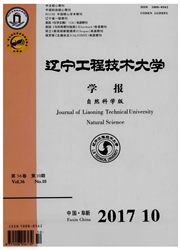

 中文摘要:
中文摘要:
以生长在沈阳市区内的4a生银杏、蒙古栎、华山松及油松为试材,采用二次热解析与GC-FID联用技术对树木释放BVOCs的两个主要成份,即异戊二烯和单萜类物质的排放速率进行测定,探讨不同树种单株幼树挥发性有机物排放规律的差异。结果表明:不同树种排放的BVOCs组成不同,银杏及蒙古栎等阔叶树种排放的BVOCS以异戊二烯为主,而油松和华山松等针叶树种以排放单萜为主;蒙古栎的BVOCs排放速率达217.38μg·(g.h)^-1,显著高于其他3种树木,属于高释放树种:树木BVOCs排放速率因树种及BVOCs种类的不同而异。
 英文摘要:
英文摘要:
In this study, the biogenic volatile organic compounds (BVOCs) emissions from typical urban tree species in Shenyang have been measured by thermal disorber sample injection system and gas chromatography with flam ionization detection. The experimental trees were four-year-old Ginkgo biloba, Quercus mongolica, Pinus tabulaeformis and Pinus armandii, respectively. BVOCs emission pattern was found to vary from one species to another. Deciduous trees emitted mainly isoprene, and coniferous trees mainly monoterpenes. The highest emission rate, about 217.38 μg.(g.h)^-1, was observed for Quercus mongolica. The emission rates of BVOCs depended on tree species and BVOCs species.
 同期刊论文项目
同期刊论文项目
 同项目期刊论文
同项目期刊论文
 Effects of Elevated Ozone on Photosynthetic CO2 Exchange
and Chlorophyll a Fluorescence in Leaves of
Effects of Elevated Ozone on Photosynthetic CO2 Exchange
and Chlorophyll a Fluorescence in Leaves of Influence of elevated carbon dioxide and ozone on the foliar nonvolatile terpenoids in Ginkgo biloba
Influence of elevated carbon dioxide and ozone on the foliar nonvolatile terpenoids in Ginkgo biloba Solar activity, Global Surface Air Temperature Anomaly and Pacific Decadal Oscillation signals obser
Solar activity, Global Surface Air Temperature Anomaly and Pacific Decadal Oscillation signals obser Impact of Elevated CO2 and O3 Concentrations on Biogenic
Volatile Organic Compounds Emissions from G
Impact of Elevated CO2 and O3 Concentrations on Biogenic
Volatile Organic Compounds Emissions from G 期刊信息
期刊信息
